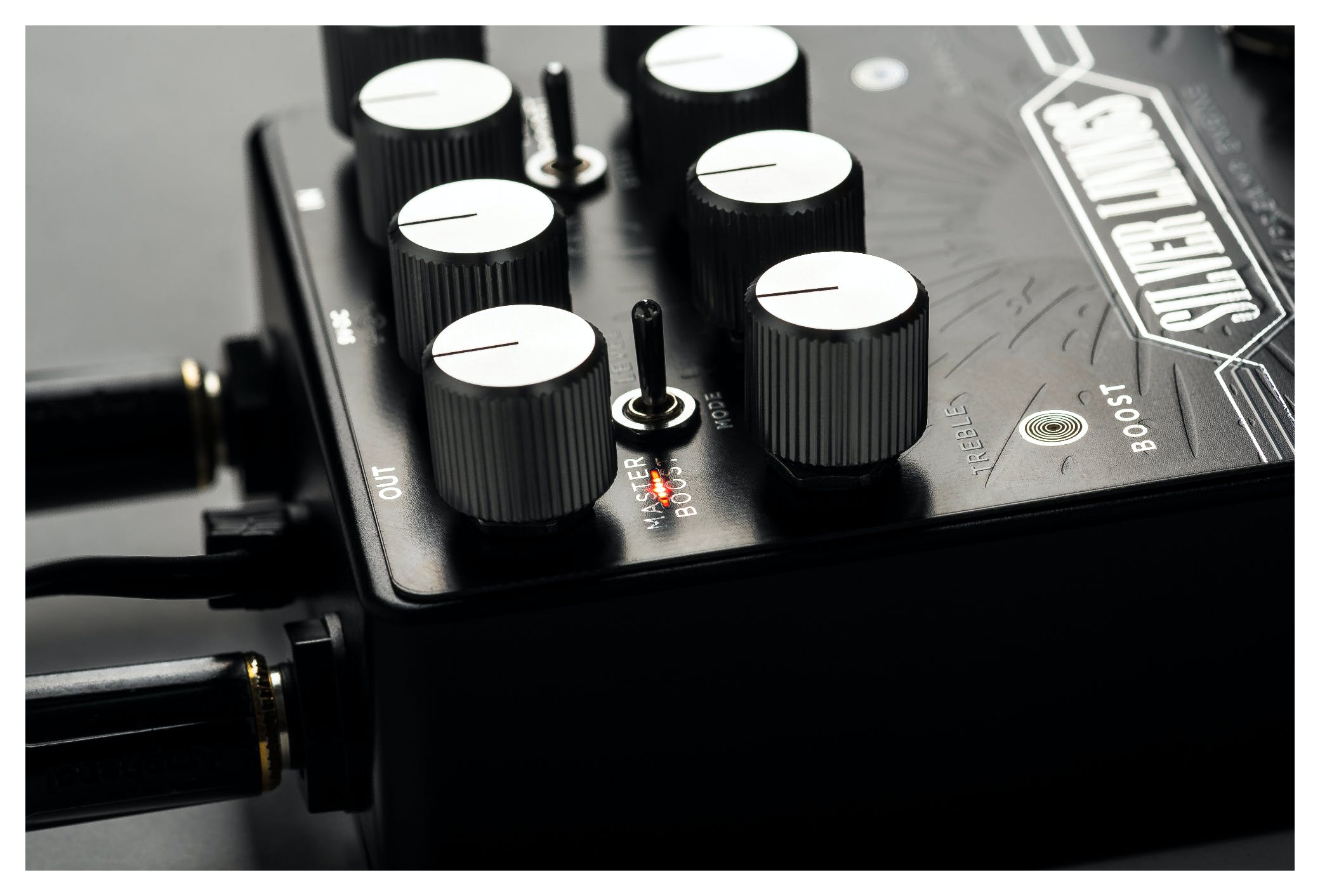- 1. Who are DSM & Humboldt?
- 2. What makes DSM & Humboldt different?
- 3. Why analogue?
- 4. Simplifier or Simplifier Deluxe?
- 5. What makes the Silver Linings different to other Overdrives?
- Conclusion
1. Who are DSM & Humboldt?
Hailing from Santiago, Chile, DSM & Humboldt are a boutique guitar pedal manufacturer. Formed in 2019, DSM & Humboldt made instant waves in the guitar community for their Simplifier Zero Watt Amp and Cab Sim Pedal.
Founders Jano Acevedo and Daniel Schwartz met around 15 years ago when Daniel was working in electronics. 4 or 5 years ago, they decided to embark on a joint venture. This culminated following the 2019 NAMM Show when Jano returned, inspired by what he calls the “Preamp NAMM Show” when several of the big hitting brands unveiled preamp pedals such as JHS with The Clover. He also noticed a trend towards cab sim technology; Daniel’s “OmniCabSim” proved to be very popular.
Jano returned to Chile enthused by what he had seen and said “we have to take all this and put it inside a box. And we have to do this right now!” Daniel got to work on bringing this to life; combining a preamp, power amp simulation and his cab sim technology. This became The Simplifier, and as Jano says, “the rest is history…”
2. What makes DSM & Humboldt different?

DSM & Humboldt carved out a unique niche in a competitive market for amp & cab sim technology. Strymon had the Iridium and Walrus had the ACS1, which both use powerful digital processing, but The Simplifier pioneered an all-analogue amp and cab sim pedal – no IRs, no MIDI, no computers. They found the perfect formula to get every sound you want just from the pedal – for technophobes or analogue purists, it was the perfect solution!
3. Why analogue?
it is possible to make a good solid-state circuit that can sound really like a real amp if you make the right design choices.
For the last 25 years or so, amp modelling technology has been dominated by digital tech – think Neural DSP, Line 6 or Kemper. Daniel describes a “je ne sais quoi” with analogue amps – so what is it that guitarists love about analogue amps?
Daniel explains that his design originated from “the fascination I have with amplifiers – tube amps and even solid-state amps”. He continues “All my life I have analysed circuits and schematics, and simulated them, and tested them […] I’ve come to realise it is possible to make a good solid-state circuit that can sound really like a real amp if you make the right design choices.”
Daniel comments that the processing power of digital technology “to my ears sounds too processed. It sounds like a record, and I didn’t like that.” In contrast, he explains “I wanted it to sound like a recorded guitar, but also like an amp in the room. So you can tweak it to get both sounds […] it’s more natural.”
With The Simplifier, the clue is in the name; “tube amps are really simple” Daniel says. “I figured out a way with a couple of switches to get a hold of the soul … the core tones [of a tube amp].” The Simplifier features 3 amp types:
- American – For classic rounded Fender Black panel cleans.
- AC Brit – For chimey Vox-esque cleans through to dynamic mid-range crunch.
- MS Brit – For vintage Marshall Plexi tones capturing the essence of classic to hard rock.
Each amp type can be paired with a variety of cab styles and power tube emulations. The only digital element of the circuit is the onboard reverb which can do everything from natural room ambience to shimmery plate or an ethereal wash.
Ultimately, there is a certain 1 or 2 percent that digital technology still doesn’t capture, whether it’s the dynamic range, latency, or its interaction with analogue pedals – it just feels different when you play. The circuitry of The Simplifier captures that analogue magic … that je ne sais quoi!












Responses & Questions